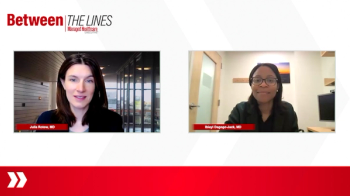
Patient Barriers to Optimal Care
Dr Coder drives a discussion surrounding barriers to prescription digital therapeutic utilization.
Episodes in this series

Megan Coder, Pharm.D., M.B.A.: A number of barriers exist in making sure these [prescription digital therapeutics] are made available, and you’ve mentioned some of them. Some of them even deal with legislation or different changes that we haven’t been able to enact in terms of making sure that Medicaid and Medicare have the ability to cover more broadly. We’ll get into that later. When we’re talking about challenges related to the products themselves, do you have any experience or ideas around when patients are trying to use these? Even their clinicians or caregivers, what are some of the biggest challenges you’ve encountered or that patients or others could encounter? [How can you] gain the biggest benefit from the products and their intended use?
Eric Cannon, Pharm.D., FAMCP: Think of it in terms of when we look at challenges. A large portion of our Medicaid members don’t have a smartphone, so how do we get a device in their hand? Even if they have a device, they may not have a good internet connection. There’s a whole host of challenges. [We need to] start with the system infrastructure that exists underneath this. Organizationally, we take a lot of accountability to make sure we’re protecting our patients’ information. As we look at these, there’s a big security review alongside that clinical review that’s very different from things we’ve done in the past. How comfortable are people within a particular health system or clinic in going down that pathway? You get challenges with providers.
When you get to the older generation, part of me that says, “You’re going to put TikTok in front of a patient, and suddenly that’s going to help improve their disease.” There’s a stigma that exists for certain providers. They may not be involved with a lot of technology. How do they trust a technology to put it in front of their patient and say, “There isn’t going to be any false positive type information or false negative information going back and forth to that patient.”
Some of this is increasing the comfort level that exists within health systems, facilities, clinics, providers and even patients. My mom recently fell, and as part of her rehab, she was given an application on her phone that helped her do exercises. She absolutely couldn’t understand how that was going to help her. We, her children, were looking at it and saying, “She’s never in a million years going to remember that exercise. But if we can get her to look at her phone and watch the video, then she’ll remember that exercise.” There are some gaps we have to bridge, and those create the challenges.
Megan Coder, Pharm.D., M.B.A.: What we’ve heard from other member companies is that when there’s dedicated support to help a patient, whether they are an older age or otherwise, if you’re able to train, teach and enable them to do something, sometimes those populations are going to be the most adherent because they’re dedicated to making sure their disease is addressed well and appropriately. Whether it’s a technology or other therapy, there’s a high level of commitment. That’s encouraging to see.
Transcript edited for clarity.
Newsletter
Get the latest industry news, event updates, and more from Managed healthcare Executive.


















































